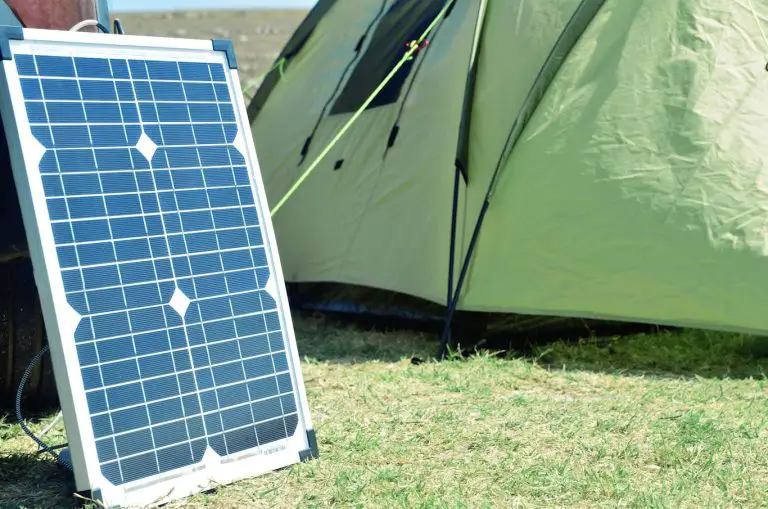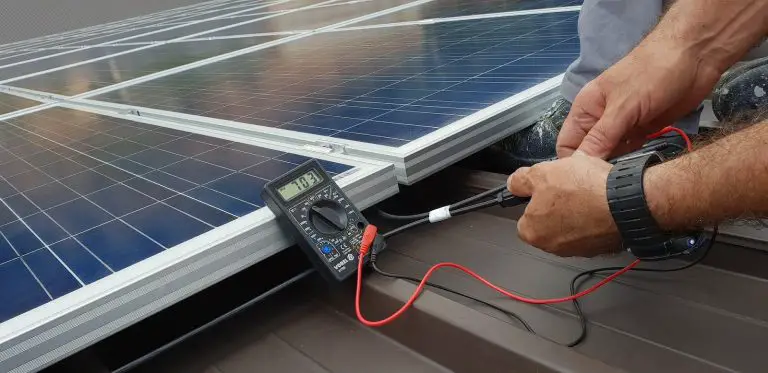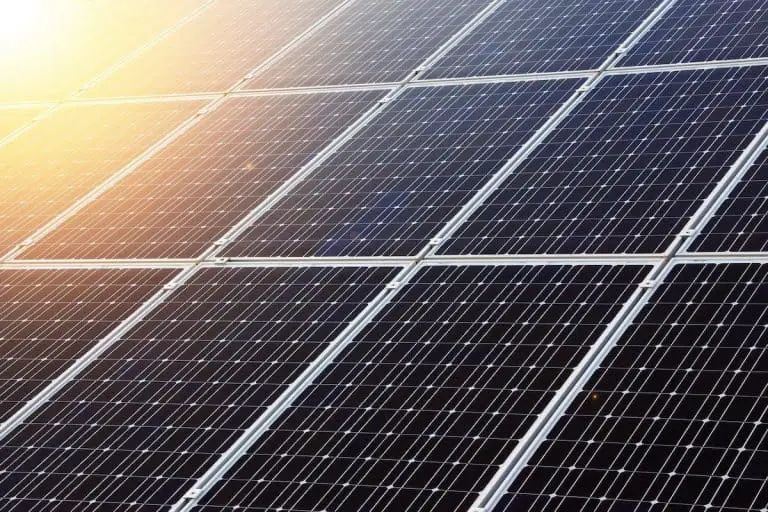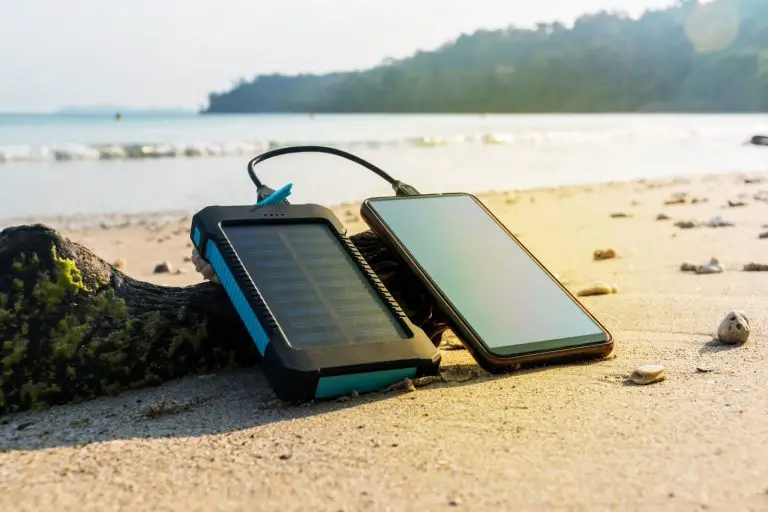Will a Solar Panel Work through Clear Plastic?
Solar panels will work through clear plastic, but not all plastics are the same. The type of plastic you use plays a role in maintaining the effectiveness of the solar panel. Adding an additional layer will likely result in a change in the reflectivity and add potential air gaps, slightly reducing the effectiveness of the solar cell.
Solar panels are an environmentally conscious way to provide power to your home. And they are popping up in other places, too — tailgates, campsites, boating and more. But solar panels only work well under certain conditions, and sometimes damage to the protective layer is unavoidable.
Still, under certain circumstances, using a plastic covering makes more sense than altogether replacing your solar panel. Continue reading to learn more about the advances in plastics and solar panel technology, as well as the types of plastic that will work best.
A Quick Overview of How Solar Panels Work
It’s not uncommon to find solar panels sprinkled on rooftops throughout your neighborhood. You may have even noticed that your fellow camping enthusiasts have a few panels set up outside of their tents or on top of their cars or RVs.
The solar panels you’ve seen on top of homes collect energy from the sun and turn it into the electricity you need to power your home. What you see when you are camping is essentially the same, but these panels are a lot smaller and, of course, portable.
There’s a good reason for the investment in solar panels as an energy source. For starters, it’s a renewable, sustainable energy source that eliminates the need for fossil fuels and greenhouse gases.
Solar panels are also low in cost — after the initial investment, that’s about it. And, whether at home or camping, there’s always something that needs charging.
With an ever-increasing need to stay at least minimally connected, solar panels can provide adequate energy to charge your devices, should you need them, even when you are in the midst of the wilderness.
Understanding How Solar Cells Work
I won’t get into an overly complicated breakdown of what makes up a solar panel here. Still, it will help to understand how they work before understanding whether a plastic covering will affect their performance. If you’d like more detail about how solar panels are made, take a look at “Are Solar Panels Glass or Plastic.”
When the sun is shining directly toward a solar panel, the cells that make up each panel work to convert sunlight into energy or electricity. This conversion happens by allowing photons, or particles of light, to separate or break electrons free from atoms, resulting in a flow of electricity (source).
Essentially, the photovoltaic cells that make up a solar panel are semiconductors, which are most commonly made from double-layered silicon. Those semiconductors interact with photons from the sun through what is called the photovoltaic effect — this is the process that creates or generates an electric current in the cell of the solar panel (source).
In addition to the layer of the cell that holds the semiconductor, you’ll also find a layer of conducting material on either side. Those layers collect the energy that is produced. Once that energy is collected, it can be sent through wires that are typically running along the top layer of the silicon semiconductor (source).
While one small cell within a panel provides a very small amount of energy, multiple cells and panels working together create the capability to power an entire home — or a small campsite.
Traditionally, solar panel production consisted of plastic usage only in connecting individual parts of the panels together. Sometimes, however, plastic is used as a sheet or film that helps to protect the glass casing and reduce internal humidity — humidity will cause cloudiness or a “fog,” which will result in lower performance for your solar panels.
More recently, though, plastic solar cells have begun to be developed as researchers and scientists have discovered that plastic can actually serve as the photovoltaic element on its own, meaning there is no need for a glass casing or silicon as the semiconductor and resulting in a much lower cost and higher durability.
Using Solar Panels with a Clear Plastic Covering
It is important to know that whether or not your panel will continue to work with a plastic covering depends heavily on the type of plastic you are using or applying.
Plastic is not one-size-fits-all — the plastic wrap you use to cover food, for example, is hugely different from the plastics I am talking about when it comes to covering solar panel parts.
Most Effective Types of Plastics for use With Solar Panels
A common type of plastic used as a protective sheet or insulating film is acrylic, which is a pretty commonly known and readily available plastic material. Another is plexiglass, though some do not recommend plexiglass as it can retain too much heat, which can damage the solar cells.
The only downside of acrylic is that it can be brittle. Still, it does retain the optical properties necessary to avoid too much reflection or heat absorption, which also results in reduced functionality of the solar cells.
Another type of plastic used is polycarbonate, which is used to protect glass and other fragile parts of the solar panel from impact, whether human error or external forces from nature, such as a severe storm or hail.
One thing to note about polycarbonate is that, while it is also easy to purchase since it is commonly used to insulate greenhouses, if it is multi-layered, it will not let in as much light as would be the case through a single layer — you’ll want to be sure that the polycarbonate is single-layer.
The third type is polypropylene, which is also often used to protect glass elements and, more recently, as part of the material in making plastic solar cells.
Regardless of the type of plastic, there is a strong chance that covering your solar panel with a plastic layer will, unfortunately, result in slightly lower power output.
The reason for this is that an added layer will generally increase or change the reflection of light, cause a haze or cloudiness in between the layers, or cause air gaps when placing an additional covering or sheet over an already existing protective layer.
Air gaps will let in humidity and cause cloudiness, so proper application is also critical in answering whether or not a clear plastic covering will work. Whether you do it yourself or hire a professional, it is difficult to make a plastic sheet adhere tightly without a single air gap.
Unfortunately, removing the already existing covering, whether glass or plastic, isn’t really an option, as it will likely damage the cells themselves.
Air gaps or issues with increased reflection could, roughly, cause a 6 or 8% reduction in performance, possibly 10, depending on the plastic material you are using and its relative thickness.
To answer whether or not you can use a clear plastic covering over a solar panel, the answer is yes, but there will almost definitely be a reduction in power output.
Nonetheless, the reduction is minimal, and when you consider the cost for replacing an entire panel versus repairing a broken one, the advantages may outweigh the disadvantage in loss of power.
An easy way to test this out is to simply place the plastic covering over the top of your panel and measure the power output both with and without the plastic. If the loss of power is extensive, you may want to choose an alternate route.
One other variable to consider when taking on this project is the thickness of the plastic sheet you are planning to use — a slight variation in thickness could result in a larger loss of power.
Degrees of Thickness and Transparency Using a Plastic Covering
Solar cells made from plastic are on the rise. There are actually solar panels that can be printed into layers, layers 200 times thinner than saran wrap (source). With that in mind, the thickness of the plastic covering matters, and thicker is not better in this instance.
The reason for that is a thicker covering may either inhibit some of the heat absorption and flow of sunlight or retain too much heat — neither of which is a good thing. It seems as though a 4mm thickness is the best option and will allow for the highest amount of energy collection without too much exposure to high heat.
When it comes to transparency, your ability to “see through” the plastic does not necessarily convert to transparency when it comes to the spectral band required for the absorption of photons.
Though they all seem clear to the human eye, certain plastics are more transparent than others — this is why using a particular type of plastic matters, specifically those mentioned above: polycarbonate, acrylic, or polypropylene.
You can purchase a plastic covering that is UV-rated as well, and it is recommended to do so — it will reduce some of the loss you may experience in power and efficiency, and it will also prevent the plastic from breaking down or becoming brittle over time.
Solar Panel Technology: From Silicon to Plastic
There are two overarching “problems” with solar panels, despite being an excellent source of renewable energy. There is the issue of recycling, which is complicated, and, unfortunately, solar panels are not easily recyclable. Also, there is the issue of cost, especially for replacement panels if they are damaged by hail or severe weather.
But despite plastic being a cheaper alternative, using plastic was long seen as problematic, given it did not have the same capability to collect energy as effectively as silicon-based cells.
This is because polymers, which are large molecules built from repeating chains of smaller units, are, in a sense, “disordered” when using plastics as compared with silicon, resulting in a less effective avenue for collecting energy from the sun (source).
However, research has shown that using semiconducting polymers, or chains of carbon atoms that have the properties of plastic, can absorb sunlight in the same way as silicon, resulting in a workable solution to conduct electricity.
One significant reason this matters when considering using solar power for camping is that they are much more lightweight. They are also cheaper. And, since you are presumably moving these panels from place to place, durability is important.
Still, whether plastic impedes the performance of solar cells is a complicated matter. Plastic slows down the movement of electrons — in other words, plastics tend to have poor electron mobility — and the mobility of the electrons needs to be fast in order for the solar cell to perform optimally.
Nonetheless, continued research has shown that, rather than trying to duplicate the molecular construction of silicon, using plastics differently, as well as utilizing different types of plastics, may help to narrow the gap in performance.
Instead of large chains of crystalline silicon, which is the dominant semiconductor material in solar panels (source), smaller crystals packed closely together and connected by polymer chains result in what scientists have called a “superhighway” for moving electrons (source).
With that said, it nearly seems like plastic is an ideal resource for repairing malfunctioning or broken panel coverings, but using a clear plastic covering over your solar cell isn’t quite the same as a solar panel already made with a particular type of plastic that allows the solar cell to function at peak performance.
Still, it is absolutely worth considering. Given the growing research in favor of plastics, alongside newer technology — and, of course, learning from others who have attempted to repair panels — using a clear plastic covering can work without reducing the functionality of your solar panel to too large a degree.
Tips on Cleaning and Repairing your Solar Panel
If your panel’s protective layer is cracked or shattered, you need to do something even if the cells still seem to work just fine. As soon as moisture enters the cell, that will no longer be the case, and you don’t want loose pieces of glass on the surface.
Hail is one of the most common reasons for damage to a solar panel, in addition to lightning strikes, a build-up of condensation, excessive humidity or cloudiness, fire, or even falling debris. What often occurs is a crack or shattering of the protective layer despite the cells underneath still generating energy.
If you’d like to learn more about how to protect your solar panels from hail, take a look at “How Do You Protect Solar Panels from Hail?”
If you choose to attempt repairing the panel yourself, you’ll want to be especially careful with the broken glass. You’ll also want to repair your panel on a day with lower levels of humidity to reduce the amount of moisture that could potentially get trapped between the plastic covering and the solar cells.
The first step is to remove the pieces of broken glass if any are present. Then, use a dry cloth to remove any dust or debris. Throw away the cloth you use as it likely contains shards of glass.
Be sure that you have measured properly so that you have a precisely sized plastic covering — remember, you want to avoid air gaps as much as you possibly can, and a covering that is too large or too small will not work well.
You need your plastic sheet to fit the frame well. Additionally, the plastic needs to fit the panel surface perfectly to reduce the amount of power loss.
Once you’ve added the plastic layer, it is a good idea to clean it. Remember that scratches could further affect your panel’s energy production because even small scratches change the way light is reflected.
The best method is to use a simple solution of dish soap and lukewarm water applied with a very soft sponge or cloth when you are cleaning. Avoid any abrasive cleaners as they can damage the solar panel further.
Once you’ve cleaned the panel as much as you are able, another tip is to use a squeegee to remove any excess water. Most importantly, do not touch any electrical elements while repairing or cleaning your panel, and make sure it is discharged from any battery source.
Once you’ve added your plastic layer and cleaned it, you can give it a try — you should find that it does indeed work, but with a slight reduction in power output.
Final Thoughts
Solar panels are a smart investment, and the types of solar panels and solar solutions are becoming increasingly available at lower costs as researchers find ways to replicate the effectiveness of silicone with plastic. Whether you are using solar panels at home or smaller panels while camping, damage can occur.
Before you call in a professional to have them replaced or buy new ones, it’s not a bad idea to try a clear plastic covering first. While it may reduce your power supply a small amount, the reduction may not be enough to matter, especially if you are using your solar solution simply to charge devices.
Invest in the proper type of plastic, one that will last longer to avoid short-term fixes that you’ll inevitably need to repeat, and one that will retain your solar cell’s effectiveness in absorbing energy from the sun. As long as you follow a few simple tips and use the recommended materials, your panel should still work through clear plastic.







